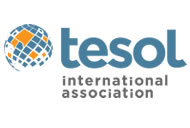TESOL Launches a Diversity, Equity, and Inclusion Initiative
by Deborah Short and Joyce Kling
 On behalf of TESOL International Association, we are pleased to announce an association-wide effort to increase diversity, equity, and inclusion (DEI) in all aspects of governance and operations following recommendations from TESOL’s Diverse Voices Task Force (DVTF). The DVTF was formed in the summer of 2019 in direct response to a range of concerns expressed by the membership, including diversity and inclusion in the TESOL Convention proposal adjudication process, as well as broader representation at the Convention and in various levels of TESOL leadership. The task force was given a mandate to report to the TESOL Board of Directors on the state of DEI within the association and make recommendations to enhance DEI within TESOL’s culture and activities.
On behalf of TESOL International Association, we are pleased to announce an association-wide effort to increase diversity, equity, and inclusion (DEI) in all aspects of governance and operations following recommendations from TESOL’s Diverse Voices Task Force (DVTF). The DVTF was formed in the summer of 2019 in direct response to a range of concerns expressed by the membership, including diversity and inclusion in the TESOL Convention proposal adjudication process, as well as broader representation at the Convention and in various levels of TESOL leadership. The task force was given a mandate to report to the TESOL Board of Directors on the state of DEI within the association and make recommendations to enhance DEI within TESOL’s culture and activities.
The task force, comprising 13 members of the association, was led by cochairs Dr. Kisha Bryan and Dr. Eric Dwyer. We are grateful to these individuals who, for 18 months, voluntarily spent their time researching, collecting, and analyzing data and formulating recommendations to the TESOL Board of Directors. The DVTF conducted research on DEI practices in similar professional associations and gathered member input through an extensive online survey.
In completing this work, the DVTF submitted a set of recommendations for building a culture of inclusion and diverse leadership in TESOL. The board is pleased to announce the DEI initiative that will help our association become more inclusive and equitable for English language teaching professionals around the world and will help us actively counter bigotry and discrimination in all its forms.
Working to embed DEI more intentionally in TESOL activities, the association will roll out the DEI initiative over the next 2–3 years. Key efforts in the near future include:
- defining underrepresented and historically marginalized groups within TESOL,
- targeting outreach for membership, and
- and encouraging applications for leadership positions;
- eliciting more detailed demographic information in membership applications and renewal forms;
- creating a process that may be used to report discriminatory acts experienced or witnessed by attendees at the Convention and other strategic events;
- providing and requiring diversity training for reviewers of Convention submissions; and
- encouraging applications for editorial team members from qualified underrepresented populations and documenting these efforts.
As we move forward with implementation of the DEI initiative, you may begin to detect changes in what has been standard practice. Experience gained from the TESOL 2021 Virtual Convention provided us with valuable insights into how we can serve those members who, previously, had not been able to attend the annual Convention. Thus, TESOL 2022 offers us the opportunity to work in a hybrid format to allow for greater inclusion. Additionally, you will notice that we are extending our request for demographic details during membership subscription and renewal. With this information, TESOL will be better able to understand the background of our current members and stakeholders, as well as build a membership recruitment plan to provide for greater representation from currently underrepresented groups.
Lastly, the TESOL Board of Directors will be engaged in strategic planning for the association in the coming year. The board is dedicated to advancing TESOL’s commitment to DEI even more explicitly in the upcoming process to lead TESOL into a more equitable and inclusive future.
Deborah Short, TESOL Past President (2021–2022)
Joyce Kling, TESOL President-Elect (2021–2022)
TESOL Blogs
Interested in writing a blog for TESOL?
Read the submission guidelines and send us your post!
Check out some of the most recent TESOL Blogs:
|
4 Tips for Building Background Knowledge in ELT, by Barbara Gottschalk

Why is background knowledge so important for reading comprehension? Background knowledge, the information and experiences we already have about a topic, helps us make links to new information. It’s a key reason we can comprehend text written at a higher reading level than what we might normally be able to read. Prior knowledge in any language can help compensate for poor second language reading skills. It’s why a graduate student can easily comprehend a research article in her field of study written in English, her second language. Lack of background knowledge is also why an undergraduate student with similar English proficiency might struggle to read and understand texts in English, his second language. Read more. |
|
STEM in ELT: 3 Ways to Seal the Leaky STEM Pipeline, by Darlyne de Haan

The “Leaky Pipeline” is a metaphor for students’ disproportionate exit from participation in a science, technology, engineering, and mathematics (STEM) content area throughout K–12 school and college, resulting in their underrepresentation in STEM careers. Middle and high school English learners (ELs), students of color, and girls—particularly those from low-income families and schools—are disproportionately excluded or dropped from the STEM pipeline at formative moments in their academic trajectories (Lyon et al., 2012).
In this blog series, over the next year, I will discuss how to seal the Leaky STEM Pipeline and steps to increase the low number of ELs entering the STEM fields.
Here are three ways of sealing the Leaky Pipeline: Read more. |
|
Building Language Learning Games With Scratch, by Jeff Kuhn
 Welcome to another edition of the TESOL Games and Learning Blog! Last month we explored Twine, a text-based interface for creating interactive stories. Twine is a great tool for older students or more advanced language learners, but perhaps not the best choice for younger learners. Younger learners can still engage in the creative process of making games by using Scratch—a visual programming language for making games and animation. Read more. Welcome to another edition of the TESOL Games and Learning Blog! Last month we explored Twine, a text-based interface for creating interactive stories. Twine is a great tool for older students or more advanced language learners, but perhaps not the best choice for younger learners. Younger learners can still engage in the creative process of making games by using Scratch—a visual programming language for making games and animation. Read more.
|